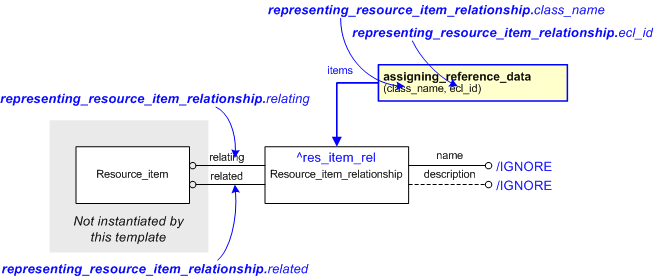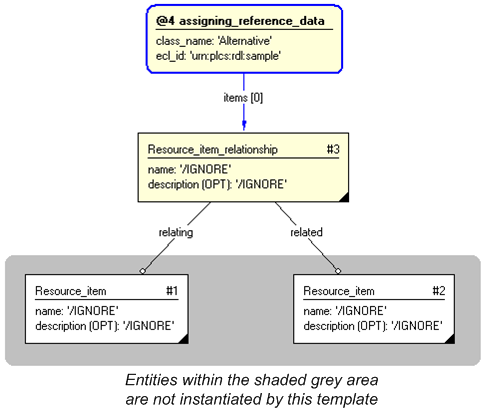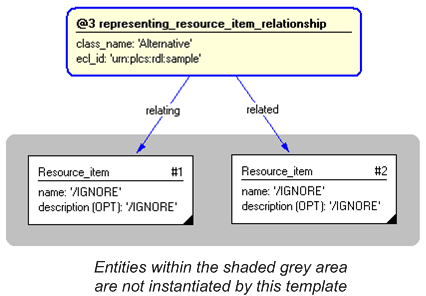Template:— representing_resource_item_relationship (rep_res_item_rel)
Capability:representing_resource |
Date: 2008/02/21 16:29:46
Revision: 1.8
|
This section specifies the template representing_resource_item_relationship.
NOTE
The template has been defined in the context of the capability
representing_resource
which provides an overall description of the
relevant parts of the ISO 10303-239 information model and a description
of related templates.
NOTE
An explanation of a template and the associated instantiation path is
provided in the
Template overview
section.
This template describes how to represent a relationship between two resource items.
The EXPRESS-G diagram in
Figure
1
shows the templates and EXPRESS entities that are required
to represent the template
"representing_resource_item_relationship".
The text highlighted in blue shows the template parameters.
Figure 1 — An EXPRESS-G representation of the Information model for representing_resource_item_relationship
The graphic for the template to be used in other EXPRESS-G diagrams
is shown in Figure
2
below.
Figure 2 — The graphical representation of the representing_resource_item_relationship template
The following input parameters are defined for this template:
The name of the
External_class used to describe the role of the relationship.
The following classes and their sub-classes can be used:
ecl_id (Default=urn:plcs:rdl:std,Type='URN')
The following reference parameters are defined for this template:
%^target = $representing_resource_item_relationship.res_item_rel%
The instantiation path shown below specifies the entities that are to be
instantiated by the template.
A description of templates and the syntax for the instantiation path is
provided in the
Templates Help/Information section.
The following entities are instantiated with attributes as specified:
The instance diagram in Figure
3
shows an example of the EXPRESS entities and templates that are instantiated by the template:
/representing_resource_item_relationship(class_name='Alternative', ecl_id='urn:plcs:rdl:sample', relating='#1', realted='#2')/
(an illustration of the consolidated representing_resource_item_relationship template is shown in
Figure
4 below.)
Figure 3 — Entities instantiated by representing_resource_item_relationship template
The instance diagram in
Figure
4
shows the graphic symbol for the template that is to be
used in other instance diagrams. The example template is:
/representing_resource_item_relationship(class_name='Alternative', ecl_id='urn:plcs:rdl:sample', relating='#1', realted='#2')/
Figure 4 — Instantiation of representing_resource_item_relationship template
Characterizations
No common characterizations of the template
representing_resource_item_relationship
have been identified. However, the ISO 10303-239 EXPRESS model
may enable other assignments to the entities instantiated by the template.




